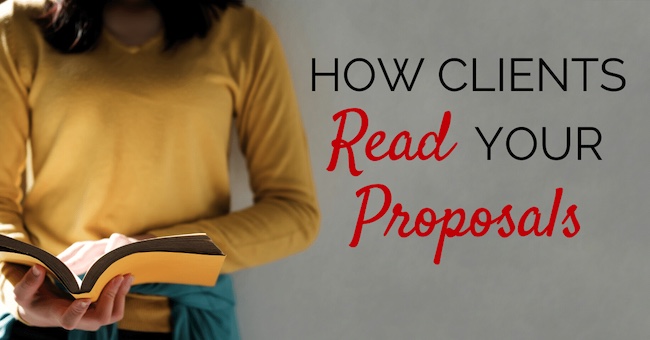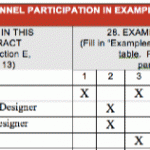
Have you ever felt this way?
You see…sometimes I just want to grab people by the shoulders and SHAKE them.
It’s not because I’m evil or out to punish people.
It’s just that sometimes assumptions are lodged so very deeply in our brains that I can’t think of any other way to possibly shake them loose.
Assumptions are the things we accept as true, without proof.
Case In Point: We make certain assumptions about how clients read our proposals.
And, believe it or not, those assumptions can be devastating to our proposals.
The Major Proposal Fallacy
When we imagine clients reading our proposals, here’s the image we see.
She/He is sitting in their recliner, feet up, with their reading glasses on and a blanket on their legs. The lit fireplace warms the room as their faithful canine lays next to the chair. The lights are just slightly dimmed.
They carefully turn each page, stopping from time to time to sip on a warm cup of tea. A few hours later, they close the book, let out a deep sigh, and reflect on the book they just read.
Listen, we spend hours upon hours creating these proposals. We spill our blood, sweat, and tears (but mostly coffee) on the pages. Of course, our clients will at least dignify our effort by taking some time out to read through our proposals.
Right?
And therein lies the problem.
How Proposals Are Read
Proposals are not a book. People don’t read proposals like they read a book.
They read proposals like they’re in a doctor’s waiting room, next to a table full of magazines.
We’ve all been there. One by one, we pick up each magazine and flip through it. Sure, we’ll likely look at every page. And if there’s an article that interests us, maybe we’ll read some of it. Not all of it, but some of it.
Then we pick up the next one. We’re less interested in this one. But we’ll flip through it. Maybe something catches our attention. Maybe nothing does.
And right as we’re (almost out of desperation) about to pick up Highlights Magazine or Hemorrhoids Today, the nurse comes in and calls our name. Time for that meeting (with the doctor). Sorry Highlights, not today.
They’ll Think You’re Crazy
You’ve got to stop thinking of proposals as a book. Maybe it’s bound. Maybe it’s in a large three-ring binder. Whatever format that proposal takes, just keep telling yourself, “It’s not a book.”
Keep mumbling that to yourself, over and over, until people in the office or on the street think you’re crazy. We can’t think of your proposal like a book. We’ve got to think of it like one of those magazines.
Books take you on a journey, leading you to a climactic event or realization. Readers don’t read page one and then skip ahead to read page 70. That’s not how you read a book (unless you’re 11 and it’s a “Choose Your Own Adventure.”) Book publishers know this.
Magazine publishers understand how their readers consume their product. That’s why every article is geared towards getting your attention. Each article is well written and only as long as it needs to be. The entire magazine is designed in a way that allows readers to quickly absorb information.
Proposals are magazines…not books.
Then Why Are You Doing This?
You might be thinking, “Duh Matt, we already know this!”
Then why do you write proposals like they are a book? Why do you approach proposals like they are a book?
You can’t just pay this concept lip service. You can’t say you know you’re producing a magazine and then deliver a book.
I understand that your clients ask for a book worth of information. But you’ve got to produce a magazine because that’s how they’ll consume the information.
A Real Proposal Evaluation Example
A mentor of mine who spent many years with a large university and healthcare system tells the story of a pile of proposals on his desk. As the clock ticks, he knows he’s going to spend less and less time on them. But he’s still got to go through them.
He lays them all out on a large conference table and goes through all the proposals at once, section by section. He compares each proposer’s sections against each other.
I can’t think of a fairer and more honorably way to get through lots of proposals when you’re in that situation.
What he did, on many occasions, has a lot more in common with how you read those magazines at the doctor’s office than how you read a book.
Now It’s Your Turn
What steps do you take to align your proposal to how clients will consume the information? Share with the group by leaving a comment.





Speak Your Mind